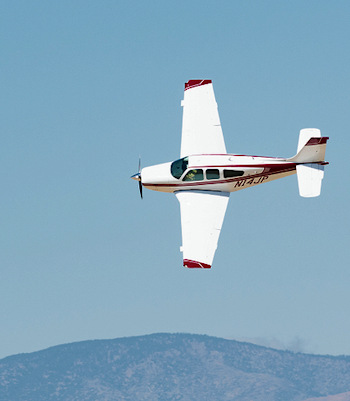Subscriber question:
"Engine failure on takeoff: I've heard so many opinions on a safe altitude to turn back. Do you have any real experience or results on how pilots perform in this area?" - Pete B.
Tom:
 “Many years ago I taught Beechcraft Bonanza simulator training at the Beech factory airport in Wichita. Engine failure immediately after takeoff provides the least margin and the greatest chance for disastrous results, so it received special emphasis. Simulators provide the only opportunity to practice this emergency safely.
“Many years ago I taught Beechcraft Bonanza simulator training at the Beech factory airport in Wichita. Engine failure immediately after takeoff provides the least margin and the greatest chance for disastrous results, so it received special emphasis. Simulators provide the only opportunity to practice this emergency safely.
In the preflight briefing, I would ask my student what he or she felt was the lowest altitude at which the engine would quit and the pilot could make it back to the runway. The most common answer I’d get was 800 feet above ground level. So I’d tell my student that’s exactly what we’d do. With plenty of warning the engine would quit at 800 AGL. The pilot then had to bank to 45 degrees at the best-glide pitch attitude, while simultaneously pulling the controllable-pitch propeller control to the low rpm position to attain maximum glide performance. In four years of presenting this scenario, I don’t recall a single pilot successfully making it back to the runway from 800 feet above ground level the first time he or she tried—even when knowing beforehand exactly when the engine failure would occur.
Next, we’d try it from 1000 feet AGL. Again, the pilot knew exactly when the engine would quit. He or she would also have just practiced the procedure. A few pilots would make it back to the runway from 1000 feet AGL, with advance warning and very recent practice. But most still could not.
What I found was that most pilots could make it back to the runway if the engine quit at 1200 feet above ground level, but only after two practice attempts immediately before the successful turn back, and only with precise knowledge of when the engine would quit.
We’d then try it from 1500 feet AGL. On an average-length runway in calm winds, pilots could easily get the airplane turned around and aligned with the runway from this height, but in most cases they were too far away from the runway to glide all the way back to the pavement.
Then, I added a little realism to the exercise. To account for the element of surprise, I’d set the pilot up for a fifth takeoff, telling him or her the engine would quit at 1200 feet AGL. I told the pilot, however, to hold attitude straight ahead for five seconds to simulate the time it takes to recognize the problem, choose a response, and initiate corrective action. With this simulation of surprise, almost no one in four years made it back to the runway…even though they had significant recent experience practicing the turn back maneuver.
What can we learn from this experience? There is really no option of turning back to the runway if an engine quits shortly after takeoff. It may be possible to make a slight turn to the left or right for the best landing option. But the standard guidance is correct: if an engine quits on takeoff, keep the wings level and land straight ahead.”
Do you have a specific minimum altitude for turning back (in case of engine failure on takeoff) in your airplane?
